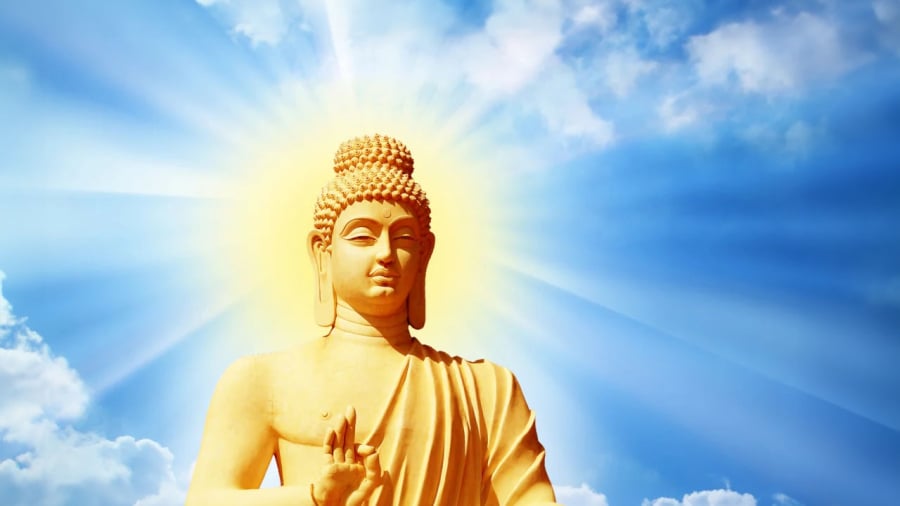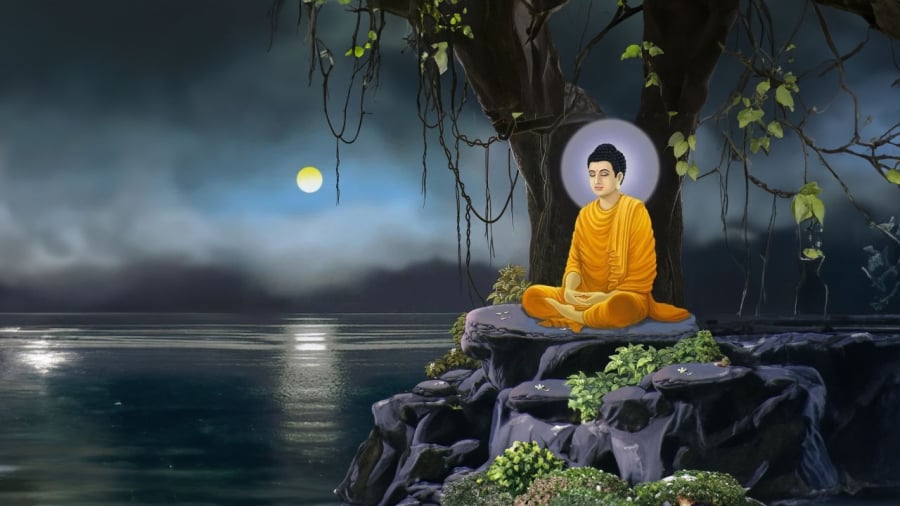Many Vietnamese people follow or are influenced by Buddhism, even if they are not Buddhists. In the Buddhist scriptures, the Buddha is described as having a beautiful and kind appearance. The scriptures state that the Buddha has 32 auspicious marks and 80 physical characteristics.
People who have a kind and beautiful appearance that resembles the Buddha’s marks are often admired and respected. It is believed that those who have these characteristics are blessed in this life because of virtuous actions in past lives. These characteristics indicate that they are kind, benevolent, and live a peaceful and virtuous life. Not everyone who is beautiful has the Buddha’s marks, but anyone who has these characteristics is considered beautiful and is believed to have good fortune.

The Buddha is said to have 32 auspicious marks and 80 physical characteristics
Who is the Buddha?
The Buddha, whose birth name was Siddhartha, was the prince of the Shakya kingdom (also known as Shakyamuni Buddha), one of the ancient small states on the Indian subcontinent, belonging to the Gautama clan.
According to the scriptures, when Prince Siddhartha was born, King Suddhodana invited Asita, a renowned monk with prophetic abilities, to visit and read the prince’s fate. When the attendants brought the prince to Asita, he lifted both of his feet and placed them on his head. The monk was amazed when he saw the prince’s feet and said, “Under the soles of the prince’s feet are the marks of a thousand-spoked wheel and 32 auspicious marks. Surely, the prince will become an accomplished practitioner or the emperor ruling over all of India.”
What are the characteristics of the Buddha’s marks?
Many Buddhist scriptures also mention that the Buddha has 32 auspicious marks and 80 physical characteristics, which are not judged by conventional aesthetic standards.
These marks are believed to signify auspiciousness, bringing kindness, good luck, and indicating a person who lives a virtuous and beautiful life. The 32 marks of the Buddha include:

What is the destiny of those who resemble the beautiful features of the Buddha?
1. Straight feet without protrusions.
2. Feet with a thousand-spoked wheel, complete with axle pins and full rim.
3. Soft and gentle hands and feet.
4. Slender, long, and white fingers.
5. Hands and feet with mesh-like skin.
6. Well-rounded and non-concave heels.
7. Round fish-like eyes.
8. Circular and full calves like those of a deer.
9. Arms long enough to reach the knees, with a well-built back.
10. Hidden male organs.
11. Broad and long tongue.
12. Only one hair grows from each pore, which is green and emits a pleasant fragrance.
13. Hair grows upwards and turns towards the face.
14. The body has a color resembling gold.
15. The body emits radiance in all directions.
16. Smooth and glossy skin, resembling oil.
17. Shoulders are straight without any defects.
18. Well-developed armpits without any hair sticking out.
19. A tall and upright body, dignified and majestic.
20. A straight and untwisted body without any deformities.
21. Palms and soles are straight.
22. The Buddha has a complete set of 40 teeth.
23. Teeth are even and beautiful.
24. Teeth are perfectly aligned without any gaps.
25. Full and round cheeks like those of a lion.
26. Saliva secreted in the throat is sweet and delicious.
27. Wide, long, and soft tongue.
28. The voice is melodious like the sound of a Kalavinka bird, audible even from a distance.
29. Eyes have deep purple color, clear like the ocean.
30. Eyelashes are uniquely extraordinary.
31. Between the eyebrows, there is a white hair emitting radiant light.
32. On top of the head, there is a protuberance, but the top of the head is not visible.
What are the 80 beautiful features of the Buddha?
1. Invisible protuberances.
2. Straight and high nose, nostrils are not visible.
3. Eyebrows like a young moon.
4. Left hand hanging down.
5. Strong and firm body.
6. Joints are as strong as a key.
7. Able to transform the body posture like a king of elephants.
8. Walks with a gap from the ground and leaves footprints.
9. Nails are red like copper.
10. Kneecaps are round and beautiful.
11. The body is pure and clean.
12. Skin is soft and delicate.
13. Tall and beautiful body without any curvature.
14. Fingers are slender, round, and small.
15. Palm lines are concealed.
16. Veins are deep and not visible.
17. Fish-like eyes.
18. Smooth and delicate body, smooth and lustrous.
19. Round and full body.
20. Straight and upright without any curves or twists.
21. Palms and soles are straight.
22. Features are complete.
23. Walks without swaying.
24. Stands still without moving.
25. The body exudes exceptional dignity.
26. People feel peace when they see the Buddha.
27. Well-proportioned facial features.
28. A dignified appearance.
29. A perfect countenance.
30. Lips are red in color.
31. Melodious and resonant voice.
32. Deep and round navel.
33. Hair spirals to the right.
34. Arms are longer than knees.
35. Hands and feet are as desired.
36. Bright and straight palm lines.
37. Long palm lines.
38. Palm lines are unbroken.
39. People feel joy when they see the Buddha.
40. The face is wide and beautiful.
41. The face is round like a full moon.
42. Speaks gracefully.
43. Pores exude a pleasant fragrance.
44. A pleasant fragrance emanates from the mouth.
45. Graceful gait and gestures, like a lion.
46. Walks like an elephant.
47. Head is shaped like a Mangosteen fruit.
48. All components are complete.
49. Beautiful and white nails.
50. Long and red tongue.
51. Thin, yet wide tongue.
52. Hair is numerous and pink.
53. Hair is soft and smooth.
54. Eyes are long and wide.
55. Has all the marks of a being due to his merit.
56. Hands and feet are white and pink like lotus flowers.
57. Hidden navel.
58. Flat stomach without protrusions.
59. Slim and beautiful waist.
60. Swings the body gracefully.
61. Weight is evenly distributed.
62. Has a tall and long body.
63. Hands and feet are soft, clean, and shiny.
64. Radiates light in all four directions.
65. Radiant light shines from the body.
66. Recognizes the equality of all beings.
67. Treats all beings with equal respect.
68. Has a powerful and majestic appearance.
69. Voice remains stable.
70. Does not preemptively assert the teachings.
71. Teaches according to the conditions.
72. Discusses the teachings in a hierarchical manner.
73. The teachings correspond to the sounds of beings.
74. Beings look at the Buddha continuously without fatigue.
75. Beings never tire of looking at the Buddha.
76. Has long and beautiful hair.
77. Hair is long and not tangled.
78. Hair is curly and beautiful.
79. Hair is the color of a green gem.
80. Possesses all the good marks of virtue.
Do those who resemble the Buddha’s beautiful features become practitioners?
The 32 auspicious marks and 80 physical characteristics of the Buddha are described in the scriptures as a way of praising him. However, this should not be understood literally, and it is unlikely to find anyone in real life who possesses all these marks. Some people may have a few of these features, such as straight soles of the feet, round heels, or a high nose… These characteristics signify beauty and are admired by many people, especially Buddhist followers. However, having these characteristics does not necessarily mean that a person will become a practitioner. These characteristics indicate beauty, benevolence, and the ability to inspire trust. Those who have these features may have practiced in past lives and are blessed with good fortune.
This information is for reference and contemplation purposes.

































